Introducing 10 commonly used Python IDEs
Python is a very easy to learn, powerful programming language. Python includes efficient high-level data structures that provide simple and efficient object-oriented programming.
The learning process of Python is indispensable without an IDE or code editor, or an integrated development editor (IDE). These Python development tools help developers speed up Python development and improve efficiency. An efficient code editor or IDE should provide plug-ins, tools and other features that can help developers develop efficiently.
This article collects some of the best 10 Python IDEs that are very helpful to developers. If you have other better recommendations, please share them with everyone in the comments:)
1. Vim
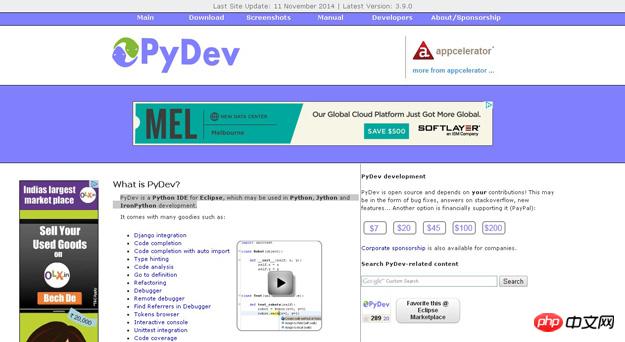
Vim can be said to be the best in Python IDE. Vim is an advanced text editor designed to provide actual Unix editor 'Vi' functionality, supporting a more comprehensive feature set. Vim doesn't take much time to learn, and once you need a seamless programming experience, integrate Vim into your workflow.
2. Eclipse with PyDev

Eclipse is a very popular IDE and has a long history. Eclipse with Pydev allows developers to create useful and interactive web applications. PyDev is an IDE for Eclipse development of Python, supporting the development of Python, Jython and IronPython.
3. Sublime Text
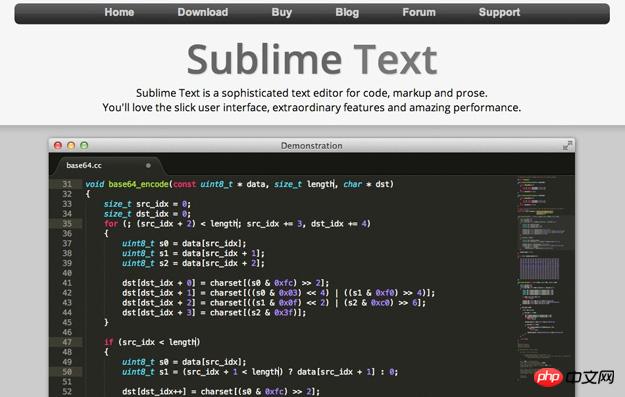
Sublime Text is one of the most popular editors among developers. It is multi-functional, supports multiple languages, and is in development The community is very popular. Sublime has its own package manager that developers can use to install components, plug-ins and additional styles, all of which can enhance your coding experience.
4. Emacs

GNU Emacs is an extensible, customizable text editor with even more features. At its core, Emacs is the Emacs Lisp parser, but supports text editing. If you already use Vim, give Emacs a try.
5. Komodo Edit
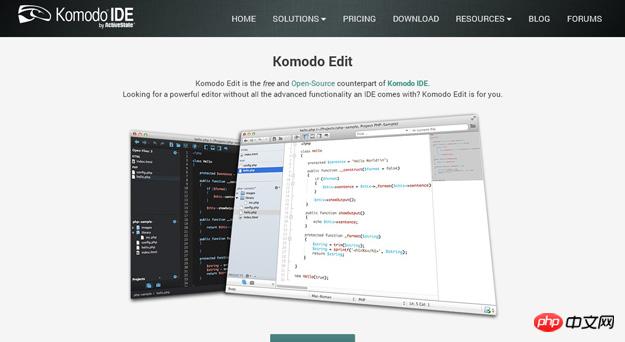
Komodo Edit is a very clean and professional Python IDE.
6. PyCharm
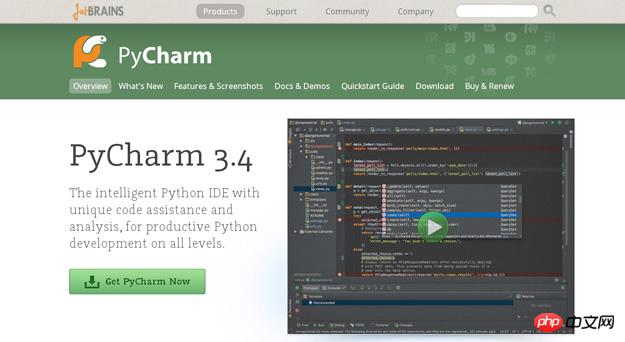
PyCharm is a Python IDE developed by JetBrains. PyCharm is used for the functions that general IDEs have, such as Debugging, syntax highlighting, Project management, code jumps, smart prompts, Automatic completion, Unit testing , version control... In addition, PyCharm also provides some good features for Django development, and supports Google App Engine. What's even cooler is that PyCharm supports IronPython!
7. Wing
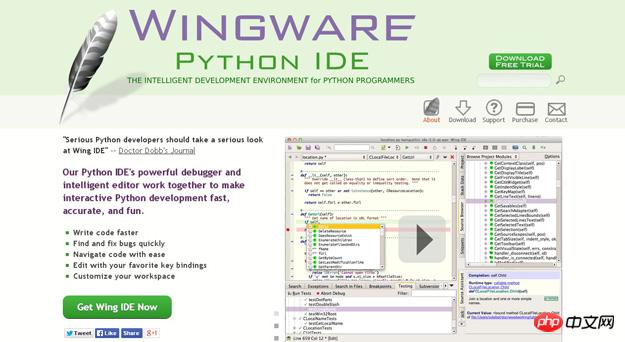
Wingware’s Python IDE is compatible with Python 2.x and 3.x, and can be combined with Django, matplotlib, Zope, Plone, App Engine , PyQt, PySide, wxPython, PyGTK, Tkinter, mod_wsgi, pygame, Maya, MotionBuilder, NUKE, Blender and other Python frameworks used. Wing supports test-driven development and integrates unit testing, nose and Django framework execution and debugging functions. Wing IDE starts and runs very quickly and supports Windows, Linux, OS X and Python versions. 8. PyScripter
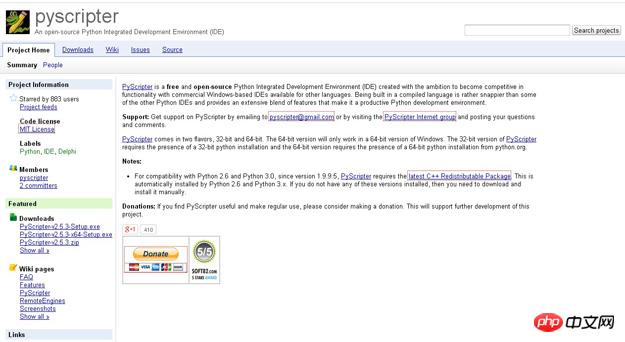 PyScripter is a free and open source Python integrated development environment (IDE).
PyScripter is a free and open source Python integrated development environment (IDE).
9. The Eric Python IDE
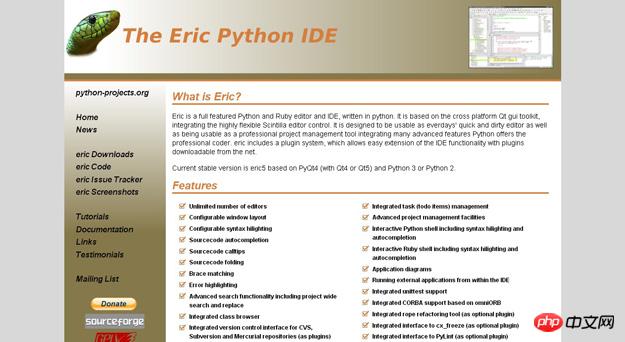 Eric is a full-featured Python and Ruby editor and IDE written in Python. Eric is based on the cross-platform GUI toolkit Qt and integrates the highly flexible Scintilla editor
Eric is a full-featured Python and Ruby editor and IDE written in Python. Eric is based on the cross-platform GUI toolkit Qt and integrates the highly flexible Scintilla editor
. Eric includes a plug-in system that allows easy functional extension of the IDE. 10. Interactive Editor
for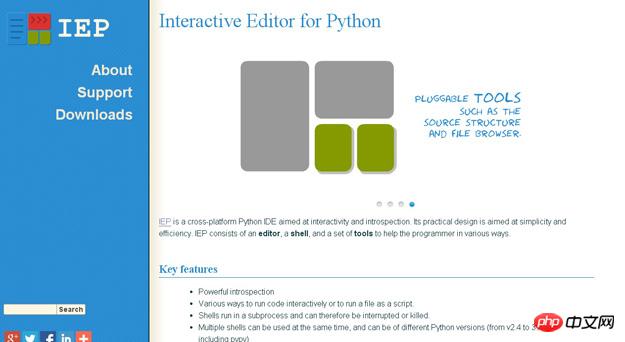 IEP is a cross-platform Python IDE designed to provide a simple and efficient Python development environment . It includes two important components: editor and Shell, and provides a plug-in tool set to improve developer efficiency from all aspects.
IEP is a cross-platform Python IDE designed to provide a simple and efficient Python development environment . It includes two important components: editor and Shell, and provides a plug-in tool set to improve developer efficiency from all aspects.
【Related Recommendations】
1
Special Recommendation:"php Programmer Toolbox" V0.1 version download 2.
Python free video tutorialEclipse+Pydev installation tutorial 4.
Choose a Python IDE that suits you
The above is the detailed content of Introducing 10 commonly used Python IDEs. For more information, please follow other related articles on the PHP Chinese website!

Hot AI Tools

Undresser.AI Undress
AI-powered app for creating realistic nude photos

AI Clothes Remover
Online AI tool for removing clothes from photos.

Undress AI Tool
Undress images for free

Clothoff.io
AI clothes remover

AI Hentai Generator
Generate AI Hentai for free.

Hot Article

Hot Tools

Notepad++7.3.1
Easy-to-use and free code editor

SublimeText3 Chinese version
Chinese version, very easy to use

Zend Studio 13.0.1
Powerful PHP integrated development environment

Dreamweaver CS6
Visual web development tools

SublimeText3 Mac version
God-level code editing software (SublimeText3)

Hot Topics
 Is the conversion speed fast when converting XML to PDF on mobile phone?
Apr 02, 2025 pm 10:09 PM
Is the conversion speed fast when converting XML to PDF on mobile phone?
Apr 02, 2025 pm 10:09 PM
The speed of mobile XML to PDF depends on the following factors: the complexity of XML structure. Mobile hardware configuration conversion method (library, algorithm) code quality optimization methods (select efficient libraries, optimize algorithms, cache data, and utilize multi-threading). Overall, there is no absolute answer and it needs to be optimized according to the specific situation.
 How to convert XML files to PDF on your phone?
Apr 02, 2025 pm 10:12 PM
How to convert XML files to PDF on your phone?
Apr 02, 2025 pm 10:12 PM
It is impossible to complete XML to PDF conversion directly on your phone with a single application. It is necessary to use cloud services, which can be achieved through two steps: 1. Convert XML to PDF in the cloud, 2. Access or download the converted PDF file on the mobile phone.
 What is the function of C language sum?
Apr 03, 2025 pm 02:21 PM
What is the function of C language sum?
Apr 03, 2025 pm 02:21 PM
There is no built-in sum function in C language, so it needs to be written by yourself. Sum can be achieved by traversing the array and accumulating elements: Loop version: Sum is calculated using for loop and array length. Pointer version: Use pointers to point to array elements, and efficient summing is achieved through self-increment pointers. Dynamically allocate array version: Dynamically allocate arrays and manage memory yourself, ensuring that allocated memory is freed to prevent memory leaks.
 Is there any mobile app that can convert XML into PDF?
Apr 02, 2025 pm 08:54 PM
Is there any mobile app that can convert XML into PDF?
Apr 02, 2025 pm 08:54 PM
An application that converts XML directly to PDF cannot be found because they are two fundamentally different formats. XML is used to store data, while PDF is used to display documents. To complete the transformation, you can use programming languages and libraries such as Python and ReportLab to parse XML data and generate PDF documents.
 How to convert xml into pictures
Apr 03, 2025 am 07:39 AM
How to convert xml into pictures
Apr 03, 2025 am 07:39 AM
XML can be converted to images by using an XSLT converter or image library. XSLT Converter: Use an XSLT processor and stylesheet to convert XML to images. Image Library: Use libraries such as PIL or ImageMagick to create images from XML data, such as drawing shapes and text.
 Recommended XML formatting tool
Apr 02, 2025 pm 09:03 PM
Recommended XML formatting tool
Apr 02, 2025 pm 09:03 PM
XML formatting tools can type code according to rules to improve readability and understanding. When selecting a tool, pay attention to customization capabilities, handling of special circumstances, performance and ease of use. Commonly used tool types include online tools, IDE plug-ins, and command-line tools.
 What is the process of converting XML into images?
Apr 02, 2025 pm 08:24 PM
What is the process of converting XML into images?
Apr 02, 2025 pm 08:24 PM
To convert XML images, you need to determine the XML data structure first, then select a suitable graphical library (such as Python's matplotlib) and method, select a visualization strategy based on the data structure, consider the data volume and image format, perform batch processing or use efficient libraries, and finally save it as PNG, JPEG, or SVG according to the needs.
 Is there a mobile app that can convert XML into PDF?
Apr 02, 2025 pm 09:45 PM
Is there a mobile app that can convert XML into PDF?
Apr 02, 2025 pm 09:45 PM
There is no APP that can convert all XML files into PDFs because the XML structure is flexible and diverse. The core of XML to PDF is to convert the data structure into a page layout, which requires parsing XML and generating PDF. Common methods include parsing XML using Python libraries such as ElementTree and generating PDFs using ReportLab library. For complex XML, it may be necessary to use XSLT transformation structures. When optimizing performance, consider using multithreaded or multiprocesses and select the appropriate library.






